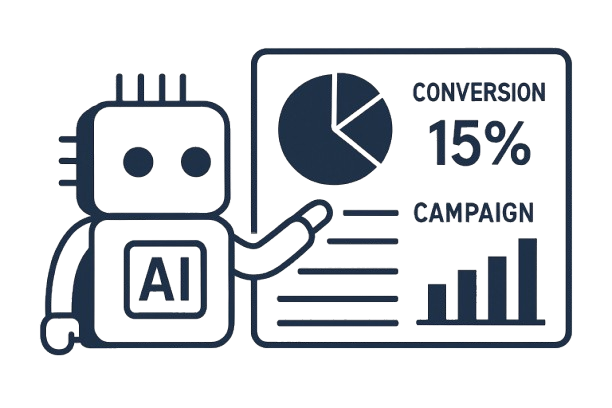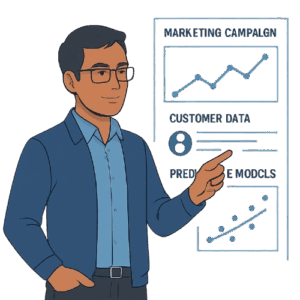Apply For Scholarship
Augmented analytics is transforming the way organizations analyze and act upon data. Coined by Gartner and popularized by Thought Leadership posts like “Augmented Analytics Is Your Business’s New Competitive Edge” this approach blends artificial intelligence (AI), machine learning (ML), and natural language processing (NLP) to automate key stages of data handling—from preparation to insight generation and explanation. It empowers all users—technical and non‑technical—to access real‑time insights without heavy reliance on data teams.
At its core, augmented analytics automates the manual toil of data preparation, cleaning, and integration. Rather than weeks of wrangling, platforms now produce clean datasets in minutes. Machine learning then detects patterns, trends, and anomalies in data that humans might overlook. Finally, natural language generation translates findings into summaries and narratives understandable for business users—no code required.

● Speed and Accuracy: Analysis that used to linger for days now delivers insights instantly—and with greater precision due to minimal human error. Automation also ensures consistency across insights.
● Accessibility for Non‑Technical Users: With NLP interfaces, anyone on the marketing or operations team can query and interpret data via chat‑style prompts. This democratizes analytics across the board.
● Real‑Time Decision‑Making: Whether optimizing ad spend, identifying at‑risk customers, or forecasting demand, insights are available dynamically as campaigns or operations unfold.
These advantages don’t just sound good on paper—they deliver. The Strategy Team emphasizes that augmented analytics enables broader participation in analytics, alignsteams more closely around data, and helps organizations respond faster to market changes
● Intuit, for example, leverages augmented analytics through Qlik Sense to unify data across its business units. This integration enables consistent dashboards company-wide, eliminating siloed reporting and enhancing decision-making across departments.
● Similarly, companies such as Classic Travel and organizations using platforms like Oracle Analytics Cloud utilize AI-driven analytics to forecast trends, reduce operational costs, and drive strategic growth—even during periods of uncertainty.
However, success with augmented analytics isn’t automatic. Common roadblocks include:
● Data Quality & Governance: Accurate insights depend on clean, well‑managed data. Organizations must institute governance frameworks and ETL audits.
● Integration and User Adoption: Training is essential to help teams embrace AI tools. Well‑executed onboarding and continuous support reduce resistance.
● Ethical and Privacy Concerns: Platforms must handle data in compliance with regional regulations and avoid biased outputs. Transparency and ethical AI policies are critical

The market response speaks volumes. From 2022 to 2023, augmented analytics saw global CAGR of 19.1%, and is projected to reach 24.4% growth between 2023–24. This accelerating adoption is fueled by enhanced AI modeling, growing demand for real‑time insights, and platform integrations that embed AI tools into CRM, ERP,and BI stacks.
Conclusion
Augmented analytics is not just another BI trend—it’s a strategic shift. By automating routine analytics and surfacing deeper insights faster, it empowers organizations to act decisively and accurately. Thought leaders like the Strategy Team and Intuit’s case highlight its ability to transform data from a backlog burden into a dynamic asset. For businesses seeking operational agility, data democratization, and smarter decision‑making, adopting augmented analytics is no longer optional—it’s essential.
Augmented analytics is the use of artificial intelligence (AI), machine learning (ML), and natural language processing (NLP) to automate data preparation, analysis, and insight generation. It enables faster and more accessible data-driven decision-making for all users.
The term was coined by Gartner and later popularized by thought leadership articles such as “Augmented Analytics Is Your Business’s New Competitive Edge.”
Through NLP and intuitive interfaces, non-technical users can interact with data using simple, chat-style prompts. This democratizes analytics and eliminates the need to rely solely on data teams for insights.
● Speed & Accuracy: Faster insights with reduced errors
● Accessibility: Easy for all departments to use
● Real-Time Decisions: Dynamic insights during operations
● Consistency: Standardized reporting across the organization
Yes. Companies like Intuit use Qlik Sense for unified dashboards, while others leverage platforms like Oracle Analytics Cloud to forecast trends, reduce costs, and drive strategic growth.
Asia’s Leading Digital Marketing & Data Science Institute
A comprehensive methodology with the best curriculum, designed according to current corporate demands and needs.
Copyright © NDMIT Edusoft Private Limited